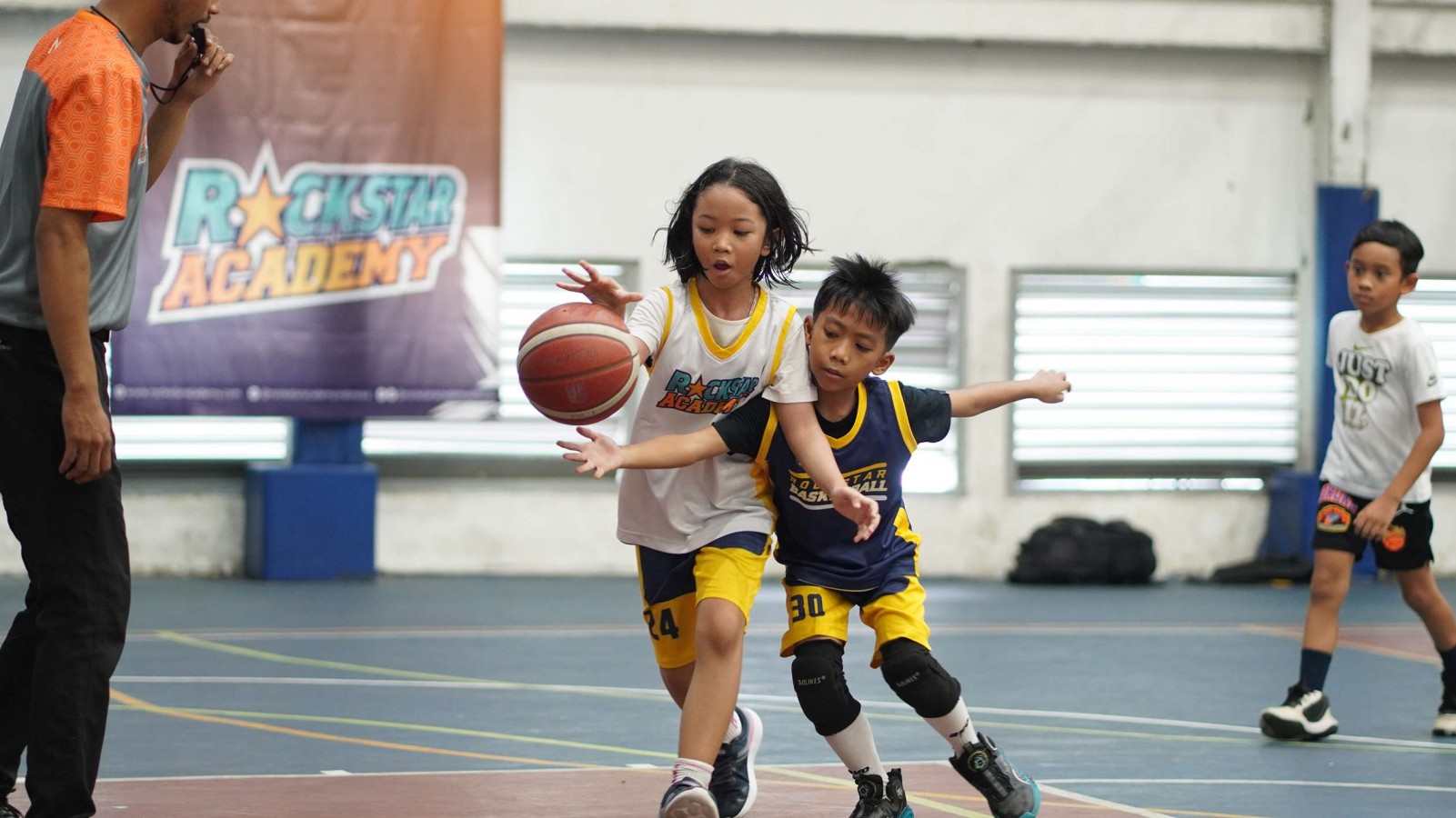Man-to-Man Basketball Defense: Complete Guide

In every sports game, a solid strategy for both defense and offense is key to winning. Each team has its own unique playing style, and it’s up to the coach to figure out the perfect game plan to counter the opponents. Of course, just like any strategy, each one comes with its own set of strengths and weaknesses.
One popular defense strategy in basketball, used even in high-stakes competitions, is the man-to-man defense. This tactic is powerful because, unlike zone defense, it assigns each player the responsibility of guarding a specific opponent. It's a test of individual skill and teamwork, requiring players to stay sharp and focused.
In this article, we’ll dive into the details of the man-to-man defense, exploring its pros, cons, and why it’s such a favorite on the court.
What is Man to Man Defense?
In man-to-man basketball defense, each player is assigned an offensive opponent to guard throughout the game. The goal is to prevent the offensive player from scoring by keeping them closely covered, contesting shots, blocking passing lanes, and disrupting the opposing team's offensive flow.
Man-to-man defense requires strong communication, awareness, and agility, as defenders must constantly adapt to the offensive player's movements.
Pros and Cons of Man-to-Man Defense
Like any strategy, man to man defense basketball defense has its pros and cons. One of them is draining because players have to guard the opponent quite tightly. Here are further explanation about the pros and cons:
1. Pros
- Individual Accountability
Each player is responsible for one opponent, which enhances accountability and limits confusion on defensive assignments.
- Versatility
Man-to-man defense allows for flexible rotations and easier double-teaming options, especially against star players.
- Aggressive Play
It encourages a more aggressive style of play that can disrupt offensive rhythms and create turnover opportunities.
2. Cons
- Energy Demanding
Constant movement and close marking make this defense physically demanding, requiring players to be in top condition.
- Exposes Mismatches
Man-to-man defense can expose slower defenders, as they may struggle to keep up with faster or more skilled offensive players.
- Risk of Fouls
Close physical contact increases the chance of personal fouls, especially if the defender is not positioned correctly or overextends on a play.
Key Principles of Man-to-Man Defense
Mastering man-to-man defense requires understanding several core principles that ensure effective coverage and support for teammates, such as:
A. Ball Pressure
Applying pressure on the ball handler makes it harder for them to pass or drive towards the basket. Defenders should maintain a low, wide stance, focus on the ball, and react quickly to changes in direction.
B. Help Defense
Help defense means providing support to teammates when they’re beaten by an offensive player. Defenders in a help position should be ready to step into the lane to prevent easy baskets and immediately return to their assigned players afterward.
C. Close-Outs
When rotating to guard an offensive player, defenders should close out by sprinting and then using short, choppy steps to prevent the offensive player from driving. Closing out too aggressively can result in an easy drive, so balance is key.
D. Communication
Verbal cues are essential in man-to-man defense, helping teammates anticipate screens, cuts, and other plays. Defenders should call out screens, help requests, and switches loudly and clearly to keep the defense cohesive.
E. Defensive Stance
A solid defensive stance with knees bent, back straight, and arms extended. Enables defenders to react quickly to the offensive player’s movements. Maintaining this stance throughout play improves stability and responsiveness.
Types of Man-to-Man Defense Strategies
There are several variations of man-to-man defense that teams can employ depending on the opponent’s strengths and weaknesses. Here are some commonly used strategies:
1. Full-Court Man-to-Man
In full-court man-to-man defense, each player guards their assigned opponent as soon as the ball is inbounded. This is a high-pressure tactic aimed at disrupting the offense’s setup and forcing turnovers, especially in transition.
2. Half-Court Man-to-Man
Half-court man-to-man defense begins when the offensive team crosses the half-court line. It allows defenders to conserve energy by focusing on guarding opponents in a smaller area of the court while still applying individual pressure.
3. Pack-Line Defense
This is a variation of man-to-man defense where defenders stay close to the lane, creating a “pack” around the paint. The goal is to prevent drives and protect the basket while allowing outside shots.
4. Switching Man-to-Man
Switching man-to-man defense involves defenders switching their assignments when screens are set, allowing for better coverage and fewer open shots. It’s often used to counter teams with strong pick-and-roll offenses.
Ready to Try Man-to-Man Basketball Defense?
The man-to-man defense may not be the ultimate defensive strategy, but it's certainly effective at keeping opponents on their toes! This approach is great for blocking outside shots and guarding the paint area.
Want to sharpen your defense skills? Try some defensive basketball drills and enroll yourself in the best Sports & Performing Arts Academy!
At Rockstar Academy, our basketball program students not only get access to top-notch training but also have the chance to show off their skills in our annual Events & Competitions such as RockOlympics and Elite Championships.
It’s a fantastic way for kids to discover their potential and boost their confidence on the court. Additionally, you can also enroll for a free trial class and experience our best basketball class in advance!
FAQ
What are the benefits of man-to-man defense compared to zone defense?
Man-to-man defense provides more individual accountability and flexibility in double-teaming, creating more turnover opportunities and aggressive play. However, it demands more stamina and can expose mismatches.
How can I improve my defensive footwork for man-to-man defense?
Practicing defensive slides, close-outs, and lateral shuffles improves footwork and agility. Staying low with a wide stance also enhances balance and quick direction changes.
When should teams switch from man-to-man to zone defense?
Teams may switch to a zone defense when facing opponents with significant size mismatches or if the man-to-man is causing foul trouble. Zone defense is also helpful in slowing down quick, athletic opponents.
What’s the main goal of helping defense in man-to-man?
Help defense provides backup for a teammate who’s been beaten by their offensive player, preventing easy baskets and forcing the offense to reset their play.
Why is communication important in man-to-man defense?
Communication helps players navigate screens, switches, and help defense situations, ensuring everyone stays in sync and limiting defensive lapses.



